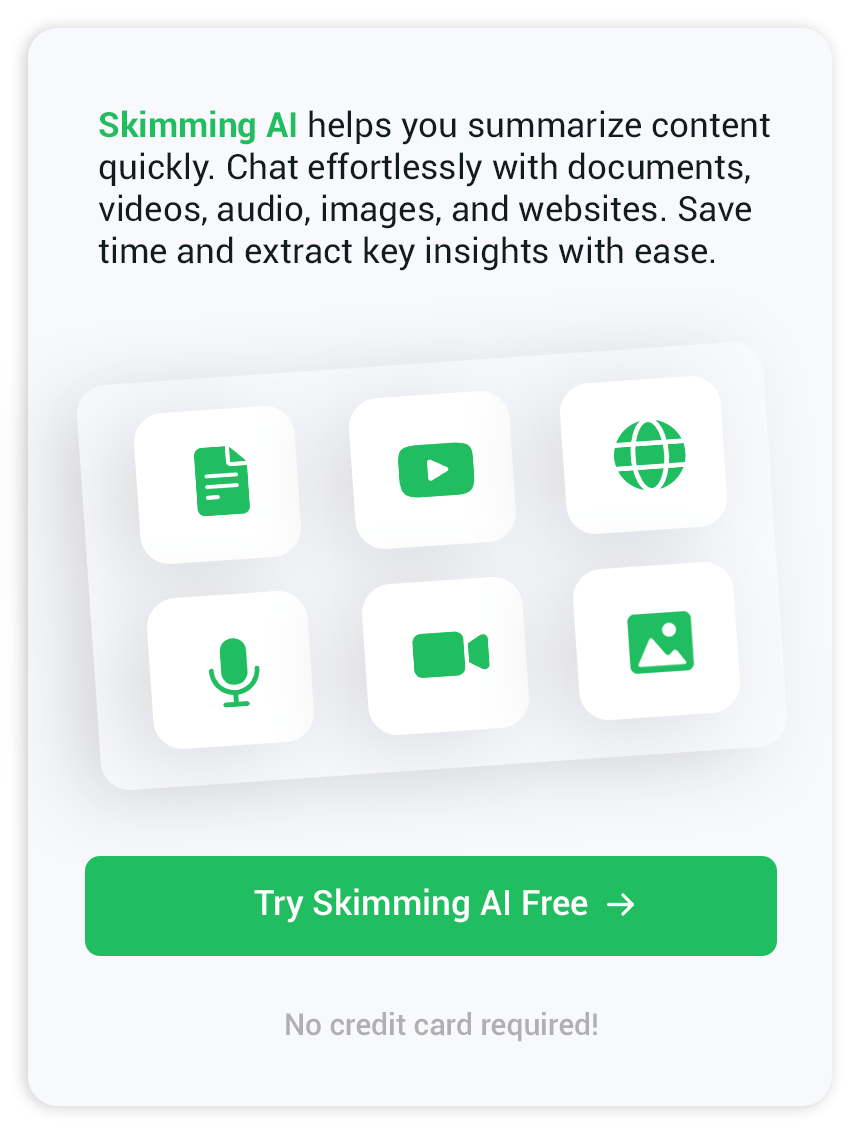AI PDF Reader Guide: Smarter Document Workflows for Everyone
Reading dense PDFs once meant scrolling for hours or relying on clunky keyword searches. An AI PDF reader flips that routine on its head, transforming documents into interactive conversations, bite-size summaries, and instant answers. Whether you handle academic papers, legal contracts, or quarterly reports, this new class of readers removes the friction between you and the information you need.
What Makes an AI PDF Reader Different?
An intelligent reader blends optical character recognition, large-language-model reasoning, and a chat interface. Instead of scanning pages, you can:
- Ask questions in plain language and receive linked answers that point to source passages.
- Summarize entire files or sections into quick digests.
- Translate and rephrase complex language for better clarity.
- Work across various formats, including Word, PowerPoint, images, and scanned documents, thanks to OCR and layout detection.
- Handle multiple files at once, keeping citations in sync.
These capabilities shift the focus from “How do I find it?” to “What can I learn from it right now?”
Popular AI PDF Reader Platforms
ChatPDF
Well-known for its side-by-side view and clickable citations, ChatPDF feels like ChatGPT but is purpose-built for scientific papers, textbooks, and manuals. A free tier covers light research; paid plans unlock bulk usage.
Smallpdf AI
Smallpdf folds chat, summary, and translation into its existing toolbox of compression and e-signature features. Browser-based and mobile-friendly, it serves teams that juggle many document tasks in one place.
UPDF
UPDF emphasizes editing and annotation alongside chat and summary. The desktop and mobile apps run specific tools offline, a plus when confidentiality matters. A single license covers every major OS.
NoteGPT
Originally a video and presentation helper, NoteGPT’s AI PDF Reader uses OCR to lift text from scanned pages, then offers chat, translation, and export to Markdown. Students appreciate its free plan.
AskYourPDF
AskYourPDF is available across the web, mobile, Chrome, and even Zotero, making it handy for academics who live in reference managers. GPT-4 and Claude routing keep responses nimble.
Honorable mention: PDF AI
The service mirrors AskYourPDF but focuses on quick uploads, instant chats, and clean exports, appealing to users who want the lightest possible interface.
Core Use Cases Across Industries
Students and Researchers
Upload a paper, request a summary, then query “Show me the experiment sample size” or “List the main limitations.” Citation links drop you at the exact paragraph, saving hours of manual scanning.
Legal and Compliance Teams
Extended agreements finally become searchable conversations. Ask for renewal dates, penalty clauses, or conflicting terms. Some readers, including Adobe Acrobat’s AI Assistant, even recognize contracts automatically and surface key obligations.
Analysts and Executives
Board packets and earnings reports turn into quick Q&A sessions. Compare figures across multiple PDFs or ask for year-over-year changes in a single prompt.
Content Creators
Journalists and technical writers accelerate first-pass research by extracting quotes and stats. Pair a reader with a writing environment, and you can drag structured answers straight into drafts.
Choosing the Right Tool
Criterion It Matters Questions to Ask
Data privacy: Confidential files need secure storage and transfer. Does the service encrypt at rest? Can you delete uploads manually?
Citation discipline: Reliable answers prevent embarrassing misquotes. Are sources linked to page numbers?
Interface speed: Time savings disappear if loading feels sluggish. How fast does the first answer arrive on a 100-page file?
Pricing model: Occasional use differs from enterprise workflows. Free tier limits? Seats for teams?
Integrations A reader that plugs into other apps keeps work fluent. Does it connect to Slack, Zapier, or API endpoints?
When a simple summary is all you need, the Skimming AI PDF Summarizer stands out. Drop in a document and receive a concise brief you can share with colleagues or attach to meeting notes.
Tactics for Getting Reliable Results
Ask targeted, layered questions.
Start broad, then drill down. “Summarize this twenty-page study,” followed by “How did the authors measure sample diversity?” keeps context tight.
Watch the citations
Quality readers link back to source pages. Click through and skim those paragraphs to confirm tone and numbers before using them externally.
Combine with classic OCR
For old scans, run an OCR cleanup first. Feeding a clean text layer into the AI boosts answer accuracy.
Keep prompts in natural language.
Avoid over-engineering your query. Most readers understand everyday phrasing just fine and respond more gracefully when the question feels conversational.
Future of AI PDF Reading
Voice interaction is already in beta on a few platforms, allowing users to ask questions while jogging or commuting. Multimodal models promise image-aware analysis, so charts and tables will feed numeric summaries automatically. Tight integrations with task managers will soon convert an answer like “Next payment due in thirty days” into a calendar reminder without a copy-paste step. Offline inference will also grow as chipmakers push more neural horsepower into laptops and phones, bringing instant AI assistance to air-gapped environments.
The direction is clear, and so is the opportunity. PDFs may be decades old, yet their role remains central in contracts, research, manuals, and reports. An AI PDF reader turns each one from a static page dump into a living knowledge source.
Ready to let your following report read itself? Fire up an AI PDF reader today, ask your first question, and reclaim the hours you usually spend scrolling.


